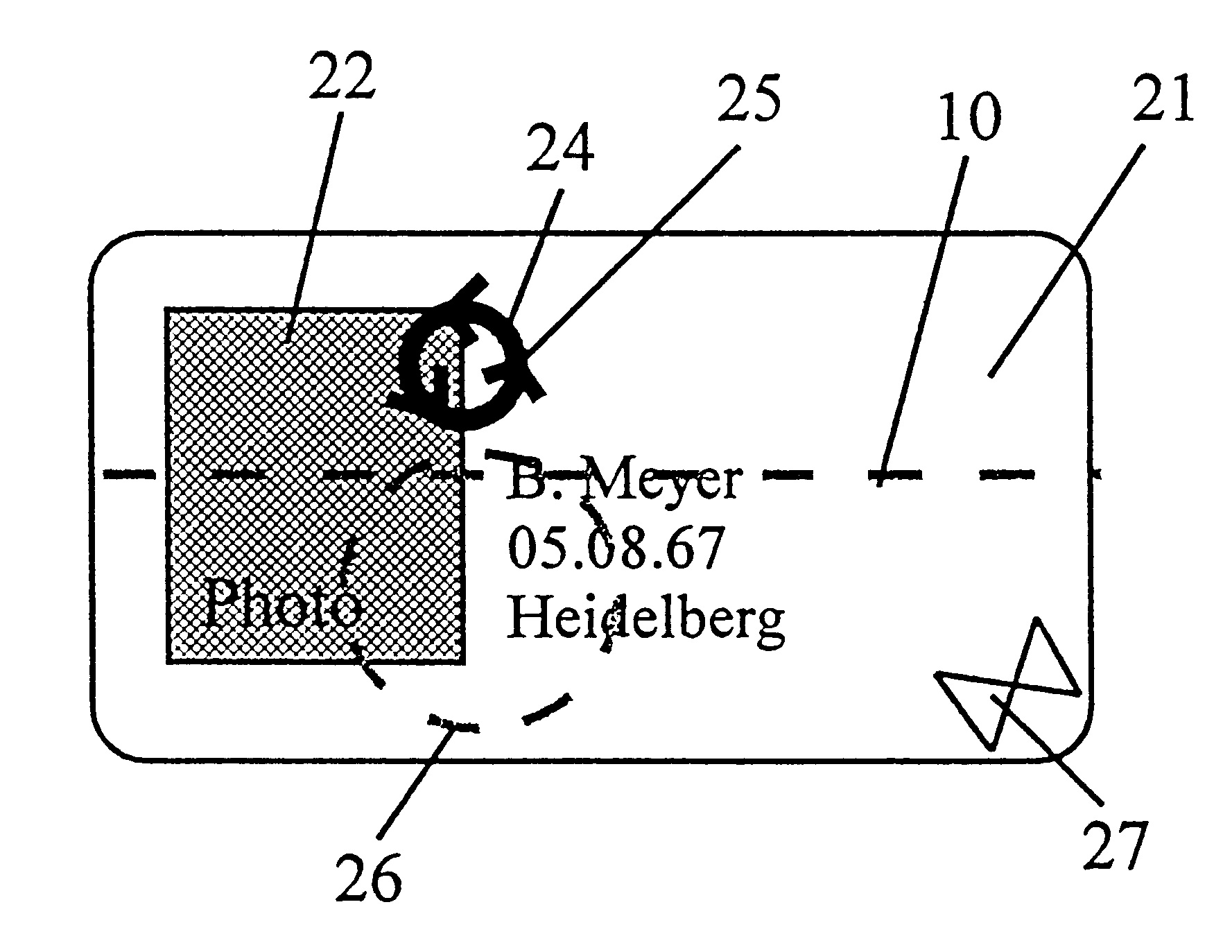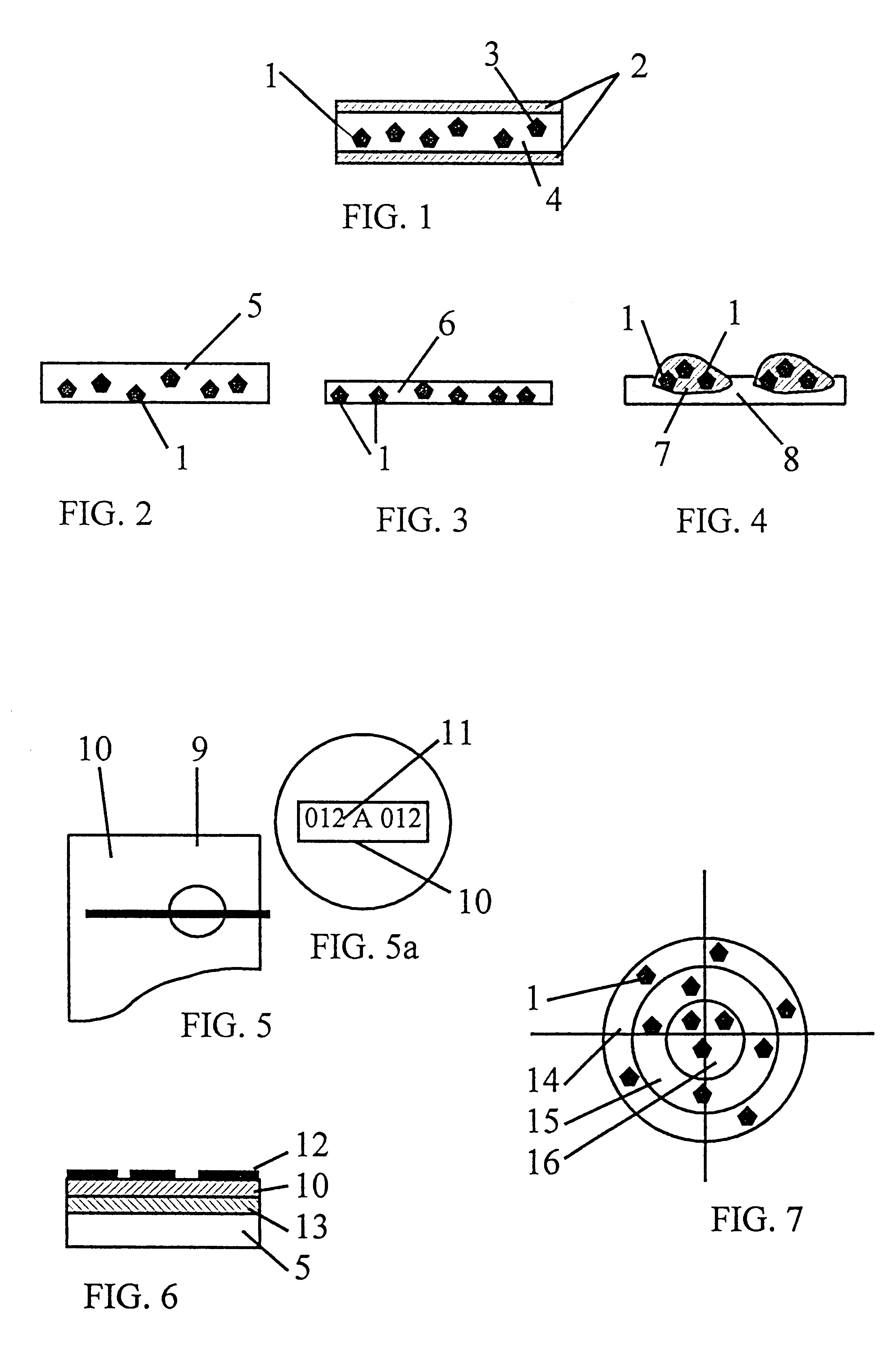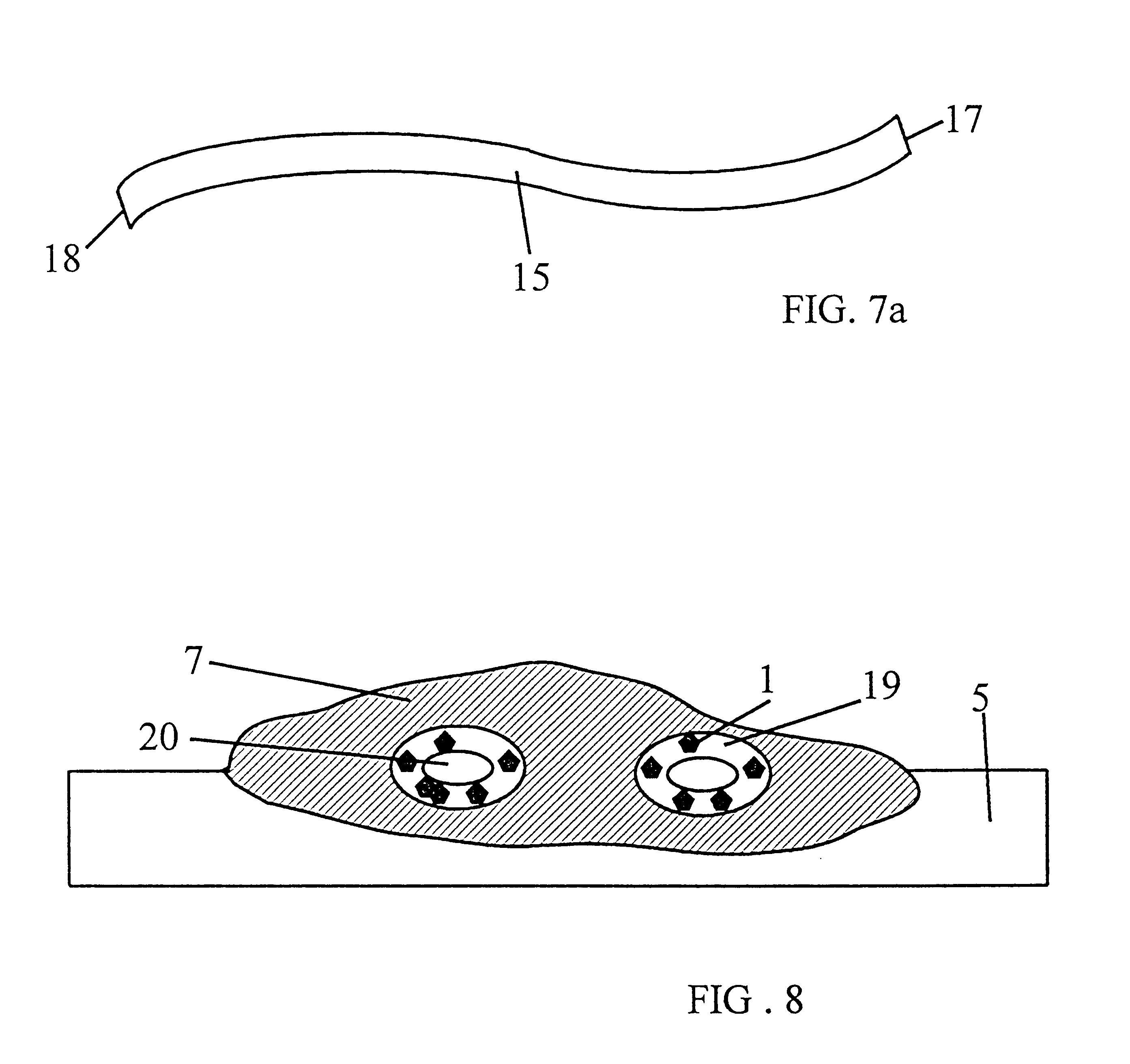Security document with optically excitable dyes for authenticity check
a technology of authenticity check and security documents, applied in the field of security documents, can solve the problems of difficult duplicate, economic disadvantage, and inability to check the authenticity of security and sensitive documents by the protection process
- Summary
- Abstract
- Description
- Claims
- Application Information
AI Technical Summary
Benefits of technology
Problems solved by technology
Method used
Image
Examples
Embodiment Construction
FIG. 1 illustrates in general a pigment platelet 1 consisting of two mutually parallel spaced-apart reflecting layers 2 which are applied on a polymer layer 4. The reflecting layers 2 consist of an oxide layer, for example, silicon oxide, silicon liquids, tin oxide, titanium oxide and the like, but may also be a metallic layer. It is essential, however, that two reflecting layers 2 oppose each other, in other words act as a mirror with respect to the interposed polymer layer, and that the laser dyes 3 are embedded in the polymer layer 4. Moreover, the end faces of the pigment platelets 1 can also be provided with the reflective layers 2, as shown in 1.
The polymer layer 4 consists of a plastic polymer. The polymer layer may be replaced by a glass layer or another transparent substrate which should be transparent for the excitation wavelength as well as for the emitted wavelength. It is therefore not important in the context of the invention to use a polymer layer 4, and other transpa...
PUM
| Property | Measurement | Unit |
|---|---|---|
| thickness | aaaaa | aaaaa |
| size | aaaaa | aaaaa |
| size | aaaaa | aaaaa |
Abstract
Description
Claims
Application Information
 Login to View More
Login to View More - R&D
- Intellectual Property
- Life Sciences
- Materials
- Tech Scout
- Unparalleled Data Quality
- Higher Quality Content
- 60% Fewer Hallucinations
Browse by: Latest US Patents, China's latest patents, Technical Efficacy Thesaurus, Application Domain, Technology Topic, Popular Technical Reports.
© 2025 PatSnap. All rights reserved.Legal|Privacy policy|Modern Slavery Act Transparency Statement|Sitemap|About US| Contact US: help@patsnap.com



